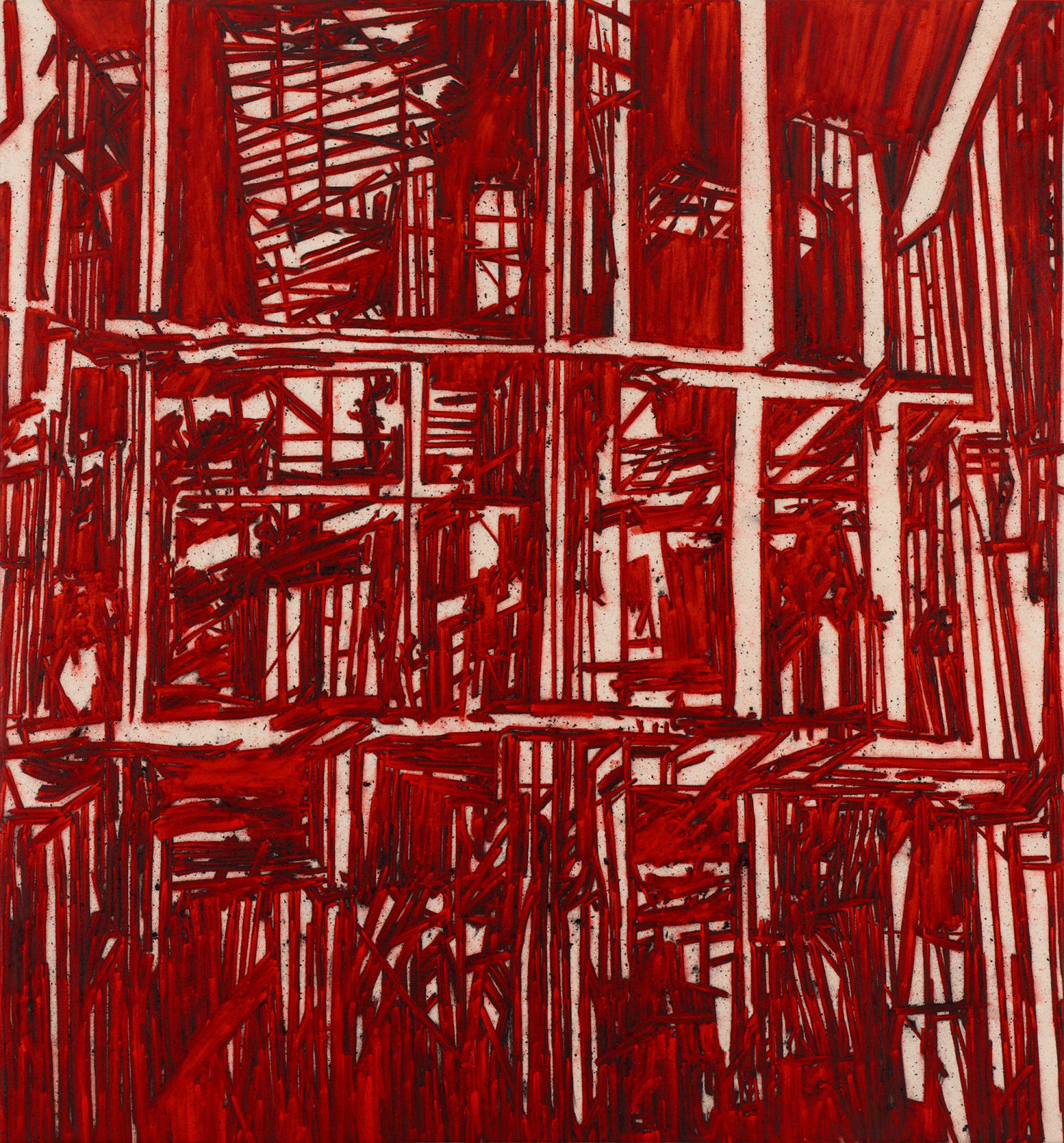
Tony Bevan British, b. 1951
Building (PC247), 2024
Acrylic and charcoal on canvas
203.5 x 190 cm. (80 1/8 x 74 3/4 in.)
Copyright The Artist
Further images
A masterful interrogation of architectural form and psychological space, Building (PC247) exemplifies Tony Bevan’s sustained engagement with the built environment – an enduring preoccupation within his practice since the 1990s....
A masterful interrogation of architectural form and psychological space, Building (PC247) exemplifies Tony Bevan’s sustained engagement with the built environment – an enduring preoccupation within his practice since the 1990s. Bevan’s structures, at once rigid and unstable, appear as skeletal frameworks imbued with a profound sense of material weight and existential tension.
In the creation of this work, Bevan conceived a building without walls, exposing the interior of objects and shadows. Working from an old studio photograph of a building, he arrived, through the process of drawing, at the notion of a skeletal structure comprising three floors, yet devoid of walls. This exploration of architectural absence materialised in the present work, wherein the raw canvas serves as the structural framework. The interplay between painted and unpainted surfaces causes the composition to oscillate between positive and negative space, reinforcing the work’s dynamic spatial ambiguity.
The present work is constructed with Bevan’s signature techniques, employing thick sticks of charcoal to delineate the heavy, linear scaffolding of the composition. The granules deposited by the charcoal lend the form a sense of permanence, yet also hint at erosion and impermanence, suggesting a structure caught between stability and collapse. This interplay is heightened by Bevan’s distinctive use of raw pigment mixed with acrylic, applied with a brush reduced to a mere stump, producing a visceral, almost abraded surface. The result is an intensely tactile work, where the rough, dry texture reinforces the raw materiality of the depicted space.
Bevan’s palette remains restrained yet striking – executed in a deep red – a hue that evokes both the warmth of human presence and the starkness of industrial decay. Building (PC247) thus exists in a state of flux, oscillating between construction and disintegration, solidity and fragility, presence and absence. It is within this liminal space that Bevan’s architectural forms transcend their physicality, becoming psychological landscapes imbued with a profound and haunting energy.
In the creation of this work, Bevan conceived a building without walls, exposing the interior of objects and shadows. Working from an old studio photograph of a building, he arrived, through the process of drawing, at the notion of a skeletal structure comprising three floors, yet devoid of walls. This exploration of architectural absence materialised in the present work, wherein the raw canvas serves as the structural framework. The interplay between painted and unpainted surfaces causes the composition to oscillate between positive and negative space, reinforcing the work’s dynamic spatial ambiguity.
The present work is constructed with Bevan’s signature techniques, employing thick sticks of charcoal to delineate the heavy, linear scaffolding of the composition. The granules deposited by the charcoal lend the form a sense of permanence, yet also hint at erosion and impermanence, suggesting a structure caught between stability and collapse. This interplay is heightened by Bevan’s distinctive use of raw pigment mixed with acrylic, applied with a brush reduced to a mere stump, producing a visceral, almost abraded surface. The result is an intensely tactile work, where the rough, dry texture reinforces the raw materiality of the depicted space.
Bevan’s palette remains restrained yet striking – executed in a deep red – a hue that evokes both the warmth of human presence and the starkness of industrial decay. Building (PC247) thus exists in a state of flux, oscillating between construction and disintegration, solidity and fragility, presence and absence. It is within this liminal space that Bevan’s architectural forms transcend their physicality, becoming psychological landscapes imbued with a profound and haunting energy.
